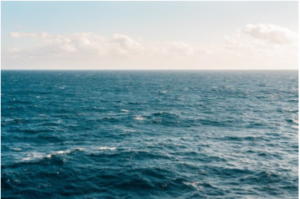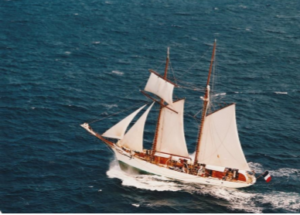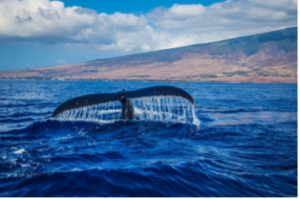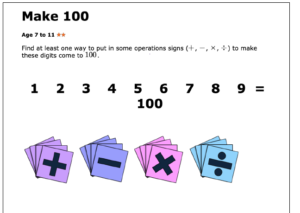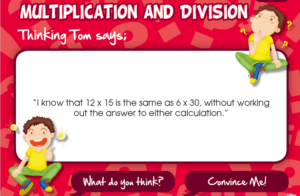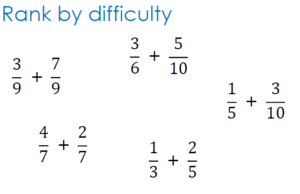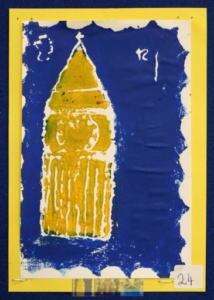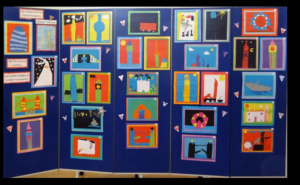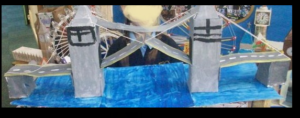Hello Year 5! We hope you have all had a great week. Thank you again for sending through all of your fantastic home learning – we have really enjoyed looking at all of the great work you have completed. Below are your home learning tasks for next week and remember, all we ask is that you try your best to complete the reading, writing and maths tasks and then you can choose from all of the other activities.
Reading:
Task 1: At least 20 minutes reading every day. Please make sure you are choosing an age appropriate book!
Task 2: Reading Comprehension: Sea Fever by John Masefield
Lesson 1: Read aloud and enjoy together
This is probably John Masefield’s most famous poem. It was written at the start of the twentieth century.
Task: Enjoy reading the poem aloud, paying attention to its rhythm and rhyme. Read it several times to get the feel of the poem. If you can, try alternating reading aloud with another person. You could perhaps read a line or a verse in turn.
Discuss any tricky vocabulary in the poem.
Sea Fever by John Masefield
I must go down to the seas again, to the lonely sea and the sky, And all I ask is a tall ship and a star to steer her by; And the wheel’s kick and the wind’s song and the white sail’s shaking, And a grey mist on the sea’s face, and a grey dawn breaking.
I must go down to the seas again, for the call of the running tide Is a wild call and a clear call that may not be denied; And all I ask is a windy day with the white clouds flying, And the flung spray and the blown spume, and the sea-gulls crying.
I must go down to the seas again, to the vagrant gypsy life, To the gull’s way and the whale’s way where the wind’s like a whetted knife; And all I ask is a merry yarn from a laughing fellow-rover, And quiet sleep and a sweet dream when the long trick’s over.
Lesson 2: Respond to poetry
Read the poem again and discuss the following questions to help you respond to it:
Q1: Do you like the poem? Why?
Q2: How does the poem make you feel? Why?
Q3: Does the poem make sense to you?
Q4: Does the poem have a story or a message? What is it?
Q5: Have you read a poem like this before? How are they similar and different?
Q6: Can you think of another title for the poem?
Lesson 3: Language for effect
John Masefield makes effective use of figurative language in the poem. He uses personification when referring to nature: “the sea’s face” and “the wind’s song”, for example.
Q1: What is the effect of this personification? What does it tell us about how the narrator views the sea and the natural world around it?
Q2: Can you find an example of alliteration? (Alliteration is the repetition of consonant sounds in quick succession.)
Q3: Can you find an example of repetition in the poem? What effect does this have on the reader?
Q4: Are there any other examples of figurative language? Annotate your copy of the poem to show where figurative language has been used.
Lesson 4: Get Creative!
Task: Create a poetry mood board for Sea Fever, using images from the Internet or your own drawings. For each image, annotate the section of the poem that it relates to.
Lesson 5: Quick quiz
Using the poem, explore these questions and encourage your child to respond using evidence from the text to back up their answers.
1) What is the narrator’s opinion of the sea?
2) John Masefield appeals to the reader’s senses in Sea Fever. Use quotes from the poem and link them to the senses.
3) Who do you think the narrator of the poem is and what might he have done in his life? What age do you think he is and why?
4) If you were to write a poem about the natural world, which place would you choose and why.
Writing:
This week for your English work you will be using the Oaks National Academy to access your learning. Each lesson will have a teacher to guide you through what we would like to do. All you need to do is click on the link below for each lesson and complete each activity. Good luck!
Lesson 1:
In this lesson, we are going to learn how to infer answers from the text.
Lesson 2:
In this lesson, we are going to learn how retrieve facts from the text.
Lesson 3:
In this lesson, we are going to explore the features of a diary entry.
Lesson 4:
In this lesson, we are to going to focus on formality
https://www.thenational.academy/year-5/english/diary-entry-spag-focus-formality-year-5-wk4-4
Lesson 5:
In this lesson, we are going to plan and write a diary entry.
https://www.thenational.academy/year-5/english/diary-entry-write-a-diary-entry-year-5-wk4-5
Spellings and Grammar:
Task 1: Complete the Spelling task on Sumdog.
Task 2: Complete the Grammar task on Sumdog.
Task 3: Put the words below under the correct word ending after making the word a plural.
| fox | box | cross |
| wish | watch | bush |
| witch | tax | catch |
| brush | match | bus |
Example: mass becomes masses
What letters are needed to make all of the words a plural?
Can you write a rule for these words that will help you make similar words plural?
| ss | x | sh | ch |
| masses | |||
Maths:
Task 1: 20 minutes of times tables work every day. Use TT Rockstars to help you practise.
Task 2: Complete the Arithmetic task and times tables task on Sumdog.
Task 3: There are 2 activities set on My Maths to complete. Use your log in details to get onto the website.
Task 4:
This task is taken from the NRich website. To view the task, follow the link:
https://nrich.maths.org/1013?utm_source=primary-map
Included on the website are tips on how to get started and worked solutions.
Find at least one way to put some operations signs (+, -, x, ÷) to make these digits come to 100.
Task 5:
Task 6:
Explain why you ranked the fractions in the order you have chosen.
Family Science Activity
Balancing Structures
The activity – Make a balancing toy.
ExpeRiment with the design of your toy to find out what affects whether or not it balances.
Learn about the centre of mass of an object and how it relates to whether or not something balances.
https://www.rigb.org/docs/balancing_sculptures_infosheet_0_0.pdf – activity worksheet in full
What you need:
- A carrot or similar vegetable
- Kebab skewers
- Marshmallows and/or other jelly type sweets, or small pieces of carrot or similar hard vegetables.
- Plasticine or blu-tac
- 500ml soft drink bottle or washing up liquid bottle
Stage 1: Cut a piece of carrot about 3 cm long. Stick a kebab skewer into one end of the piece of carrot and break the skewer so that you have only 2 or 3 cm of it sticking out. Try to stand the carrot piece up on the end of the kebab skewer – you should find this very difficult, if not impossible to do.
Stage 2: Stick a kebab skewer into each side of the carrot so that they point downwards at about 45 degrees. Then stick a marshmallow or other jelly sweet onto the ends of the skewers, as shown in the picture below. Place this on top of a bottle and you should find that it balances.
Get children to investigate what happens when you slide the marshmallows up and down the ‘arms’ of the sculpture and if you add more marshmallows. Stick an additional two or more kebab skewers into the carrot and challenge children to add at least one item to each skewer and still keep the sculpture balanced.
Questions to ask children: With just central part of the sculpture: why doesn’t this stay balanced? Before showing them stage 2: do you think we can use more kebab skewers and anything else to help it balance? Why do you think it balances like this? What can we change? (position of skewers, items pushed onto the skewers, position of things on skewers) What do you think will happen if we change these things? What do you think we need to do to make sure our sculpture balances?
Going further:
Try making some animal-shaped balancing toys: http://bit.ly/AniBalance
Make a balancing butterfly: http://bit.ly/BalanceButterfly
Art
Art Challenge Famous Landmarks:
For this week’s Art Challenge I would like you produce some art that is linked to a famous landmark. Your landmark can be natural or man-made. It can be a drawing, a sculpture made from recycled materials, a collage, something made out of pebbles and twigs , it could be drawn on a tablet or made out of Lego, or indeed else that you can think of. I have even seen Big Ben made out of socks! Let you imaginations run wild!
Here are a few ideas:
However, if this doesn’t appeal to you can still send any other art work to me and I will post that on the Blog too.
Please email your artwork to me:
n.pearson@stpeterswaterlooville.hants.sch.uk
Thank you
Keep creating and keep safe!
Mrs Pearson
Music
Ravi Shankar
Go to the website below and watch Naomi Wilkinson’s video about Ravi Shankar.
https://www.bbc.co.uk/teach/ten-pieces/classical-music-ravi-shankar-symphony-finale/znk8bdm
Why is Shankar considered to be a musical trailblazer?
Now listen to the whole piece in the second video. Make a list of the different instruments you can see. Choose 1 and find out 3 facts about it.
Topic work linked to Ancient Egypt
Task: Your task is to research the river Nile and compare how it important it was for the ancient Egyptians with its importance for modern Egyptians.
Consider the following:
Ancient Egypt – The River Nile.
- What do you know about the River Nile?
- How important was the Nile to Ancient Egyptians?
- How important is it to modern day Egypt?
- What are the similarities/ differences?
- What were/ are the benefits and disadvantages of living by the river?
After you have carried out your research you could:
- Create a poster showing the comparisons
- Create a leaflet comparing how the ancient Egyptians use the river Nile with how it is used today.
- Draw and label a picture of the river Nile talking about its benefits for the ancient Egyptians.
Good luck!
Year 5 team.
